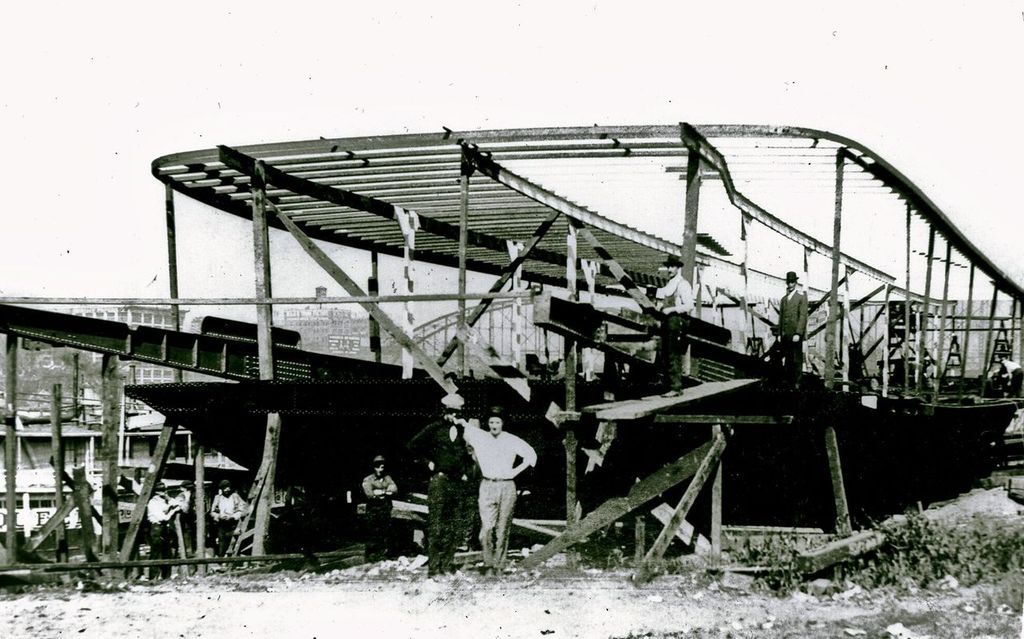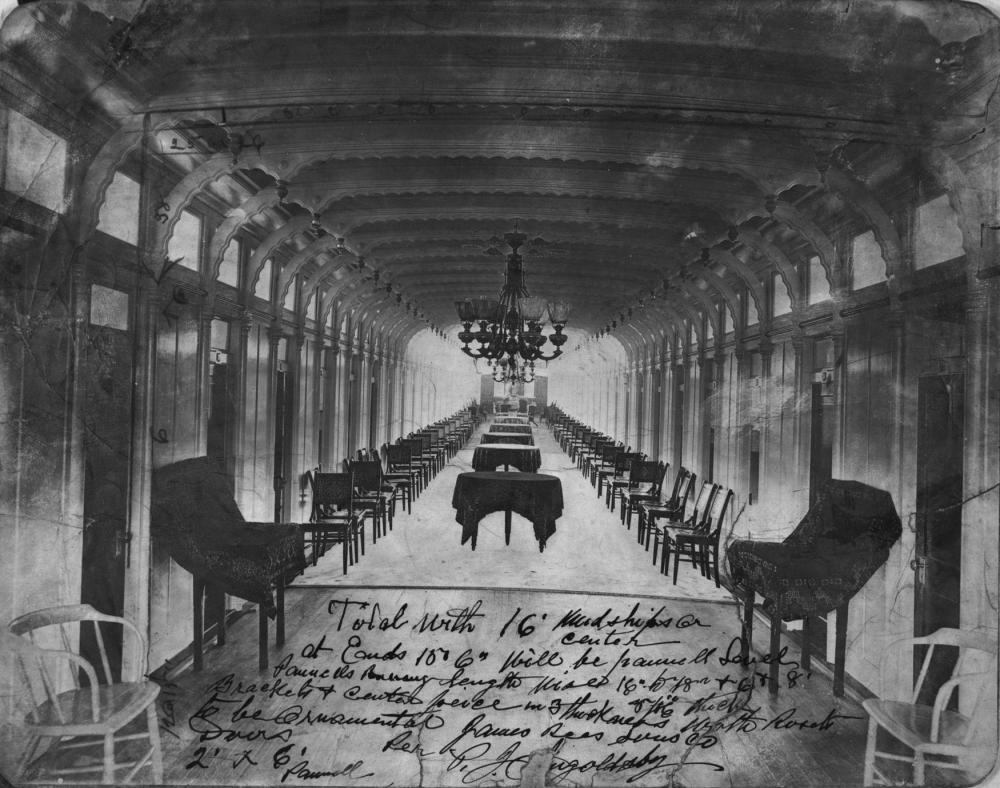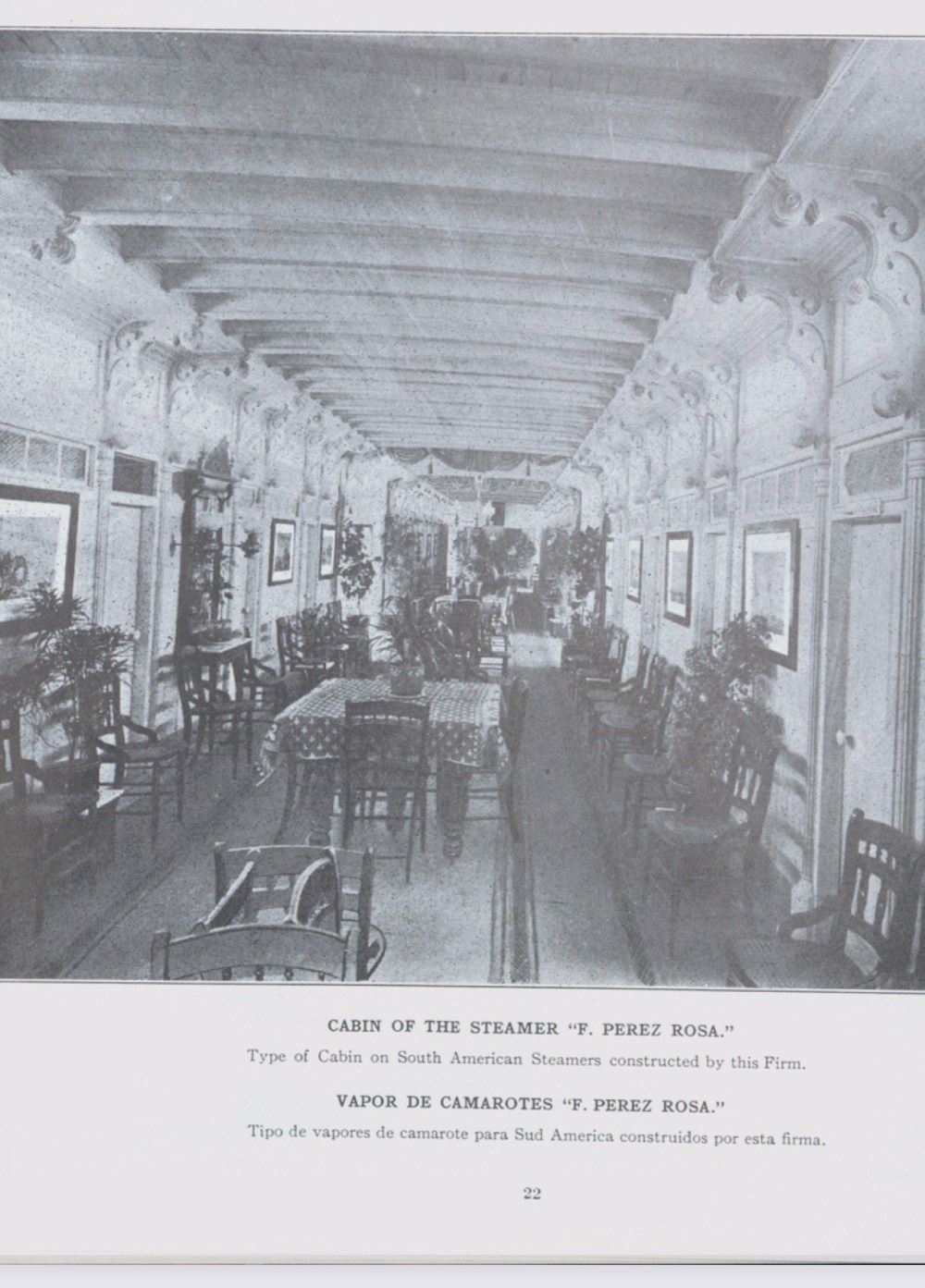Who Built the Belle? The Story of James Rees and Sons

In 1914, the West Memphis Packet Company commissioned the Idlewild. They had selected the best company in the United States to build the ferryboat they planned to use to transport people and goods across the Mississippi, James Rees and Sons of Pittsburgh, Pennsylvania.
Anyone who has been on the Belle has heard this much, but what else do we know about the firm that built our boat?
James Rees was born in Wales in 1821, one of nine children born to Thomas and Mary Rees. The family immigrated to St. Clairsville, Virginia (now West Virginia–this was prior to Virginia’s Civil War era split) in 1827. Less than a week after their trip, according to Rees family lore, Thomas Rees died, leaving the family scrambling to find a way to earn their keep in this new country. At only seven years old, James went to work for a shoemaker, the first of many jobs he tried out before the family settled in Pittsburgh, Pennsylvania and he found work in the steam engine building industry for $3.00 a week.
Rees was “about five feet eight inches tall, stout, of ruddy complexion, of a courteous and affable disposition,” was “respected by all, and his modesty…kept him out of public view.” He purchased a shop of his own in 1854. The company built the first steel-plate steamboats in the U.S., according to an early 20th century account of notable Pittsburgh figures. Rumor also has it that they built the first steamboat with electric light throughout the boat.

This photo shows the interior of a steamboat built by James Rees and sons. Photo: University of Wisconsin Madison Digital Collections.
The company did not just innovate in shipbuilding. Decades before the Progressive Era codified workers’ rights, James Rees and Sons began limiting workers’ days to ten hours, believing that productivity was increased along with rest. Other companies soon followed his example.
In 1878, James Rees and Sons began building steamboats for an international audience, first in South America, and then as far away as Russia. A 1913 James Rees and Sons catalog can be found online with Spanish translations for their South American audience.

This page out of the James Rees and Sons catalog shows the English and Spanish captions. Photo: University of Memphis Digital Commons.
James Rees had three sons that worked at the company, Thomas M. Rees, his oldest son, who was vice-president, William M. Rees, the treasurer, and David A. Rees, who was secretary. They continued the business for over forty years after James died in 1889. It closed its doors in 1930. You can still visit the site today, which is located at Duquesne Way, or modern-day Fort Duquesne Boulevard and Fancourt Street, or Fourth Street and approximately where Stanwix Street is today in Pittsburgh, Pennsylvania.